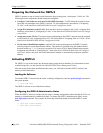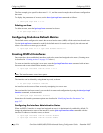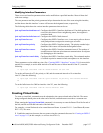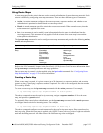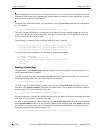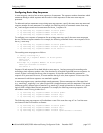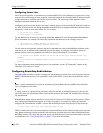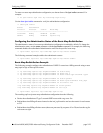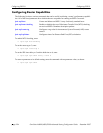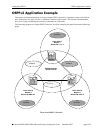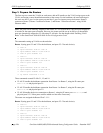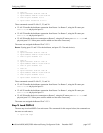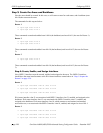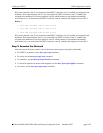
Configuring OSPFv3 Configuring OSPFv3
page 2-22 OmniSwitch 6800/6850/9000 Advanced Routing Configuration Guide December 2007
Configuring Access Lists
An IP access list provides a convenient way to add multiple IPv4 or IPv6 addresses to a route map. Using
an access list avoids having to enter a separate route map statement for each individual IP address. Instead,
a single statement is used that specifies the access list name. The route map is then applied to all the
addresses contained within the access list.
Configuring an IP access list involves two steps: creating the access list and adding IP addresses to the list.
To create an IP access list, use the ip access-list command (IPv4) or the ipv6 access-list command (IPv6)
and specify a name to associate with the list. For example,
-> ip access-list ipaddr
-> ipv6 access-list ip6addr
To add addresses to an access list, use the ip access-list address (IPv4) or the ipv6 access-list address
(IPv6) command. For example, the following commands add addresses to an existing access list:
-> ip access-list ipaddr address 16.24.2.1/16
-> ipv6 access-list ip6addr address 2001::1/64
Use the same access list name each time the above commands are used to add additional addresses to the
same access list. In addition, both commands provide the ability to configure if an address and/or its
matching subnet routes are permitted (the default) or denied redistribution. For example:
-> ip access-list ipaddr address 16.24.2.1/16 action deny redist-control all-
subnets
-> ipv6 access-list ip6addr address 2001::1/64 action permit redist-control no-
subnets
For more information about configuring access list commands, see the “IP Commands” chapter in the
OmniSwitch CLI Reference Guide.
Configuring Route Map Redistribution
The ipv6 redist command is used to configure the redistribution of routes from a source protocol into the
OSPFv3 destination protocol. This command is used on the OSPFv3 router that will perform the redistri-
bution.
Note. A router automatically becomes an Autonomous System Border Router (ASBR) when redistribu-
tion is configured on the router.
A source protocol is a protocol from which the routes are learned. A destination protocol is the one into
which the routes are redistributed. Make sure that both protocols are loaded and enabled before configur-
ing redistribution.
Redistribution applies criteria specified in a route map to routes received from the source protocol. There-
fore, configuring redistribution requires an existing route map. For example, the following command
configures the redistribution of OSPFv3 routes into the RIPng network using the ospf-to-rip route map:
-> ipv6 redist ospf into rip route-map ospf-to-rip
OSPFv3 routes received by the router interface are processed based on the contents of the ospf-to-rip route
map. Routes that match criteria specified in this route map are either allowed or denied redistribution into
the RIPng network. The route map may also specify the modification of route information before the route
is redistributed. See “Using Route Maps” on page 2-19 for more information.



